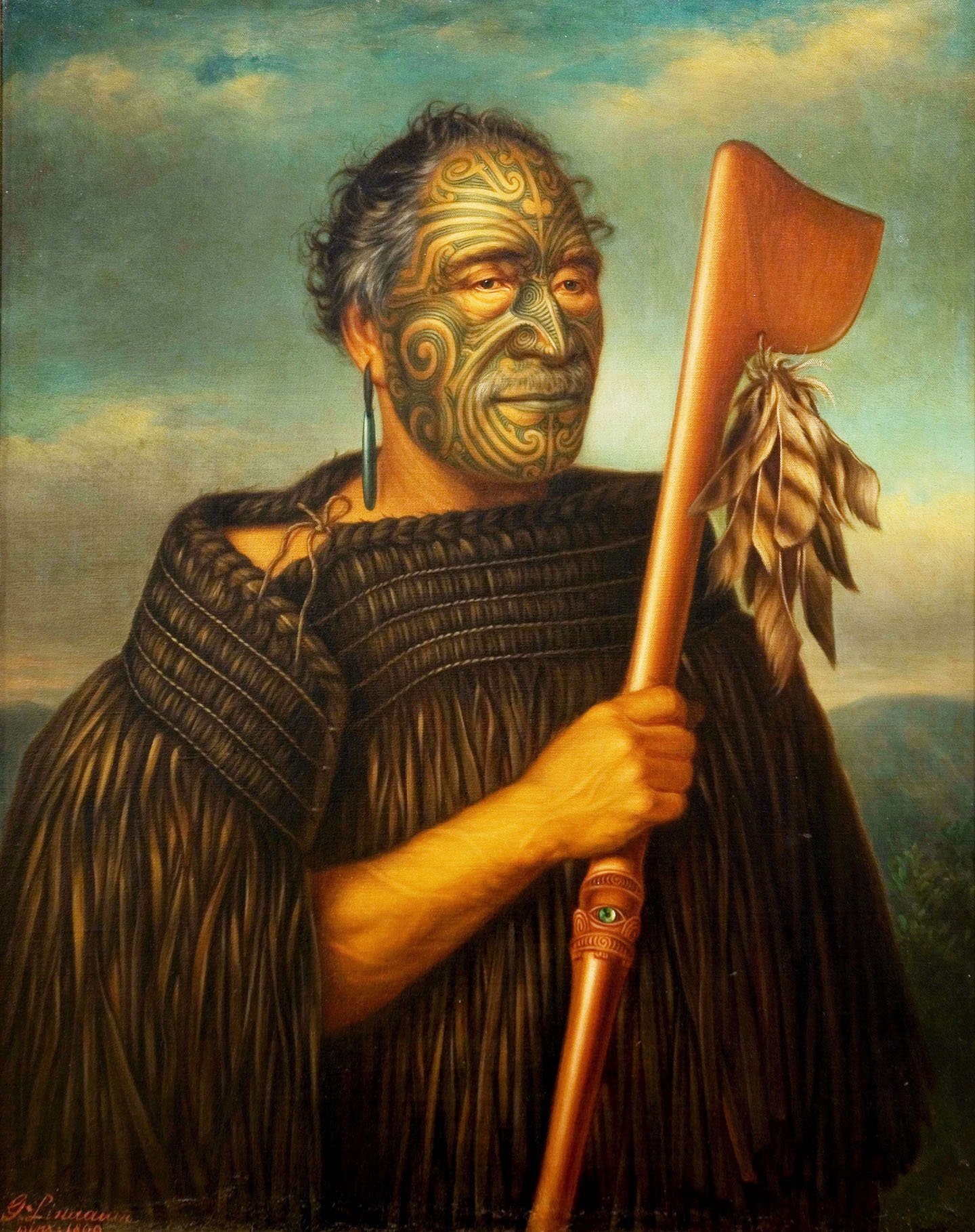Tamti Waka Nene, Gottfried Lindauer
Gottfried Lindauer, Tamati Waka Nene, 1890, oil on canvas, Auckland Art Gallery, Auckland, New Zealand.
Māori are the indigenous people’s of New Zealand and championed a distinct and beautiful culture for centuries. To the western eye, many features of this painting jump out immediately, such as the elaborate facial tattoo, known as Moko, the cloak he dons, known as a Kahu Kiwi, the fine jewelry he wears on his ear, or the wooden weapon, known as a Tewhatewha; however, for the Māori, these details and adornments represent the core of their heritage.
The subject of the portrait, Tamati Waka Nene, was a chief of the Ngāti Hao people in Hokianga, and served as an important war leader. Born sometime in the 1780s, Nene lived through a tumultuous period in New Zealand when British missionaries first began making their arrival. These immigrant strangers played a massive role in the later years of Nene’s life as he converted to the Wesleyan faith and changed his name to Tāmati Wāka, a name inspired by Thomas Walker, an English merchant and patron of the Church Missionary Society.
In the west, portraits are a common form of artwork used for decoration and commemoration, or to display power and wealth. However, in the Māori world, portraits such as this one carry a far more spiritual and familial meaning. While westerners pass down portraits from generation to generation to remember their ancestors, Māori portraits are embodiments of the subject and bring an ancestral presence into the physical and living world. Paintings and other treasures passed down are revered and cared for greatly, and these works would commonly be seen hung in the central building of a community center to be interacted with – spoken to, wept over, and cherished.
The man who depicted Tāmati Wāka Nene, Gottfried Lindauer, was a Czech artist and trained at the Academy of Fine Arts in Austria and worked as a portrait artist for many years before moving to New Zealand in 1873. His Patron, Henry Partridge, commisioned Lindauer to paint a series of well-known Māori chiefs, and through this process, was able to not only depict these chiefs in a beautiful manner, but also displayed Māori culture in a manner few had done before.
Although Nene was never able to see the portrait commemorating him as it was completed 19 years after his passing, it’s impact has held great significance. For those close to him or those of Māori descent, Lindauer’s portrait offers them the chance to remember their ancestor and to celebrate their rich culture and history. For those who live anywhere else in the world who may not have an expansive knowledge of Māori culture and heritage, the portrait of Tāmati Wāka Nene offers a chance to understand a culture far separated from theirs.
